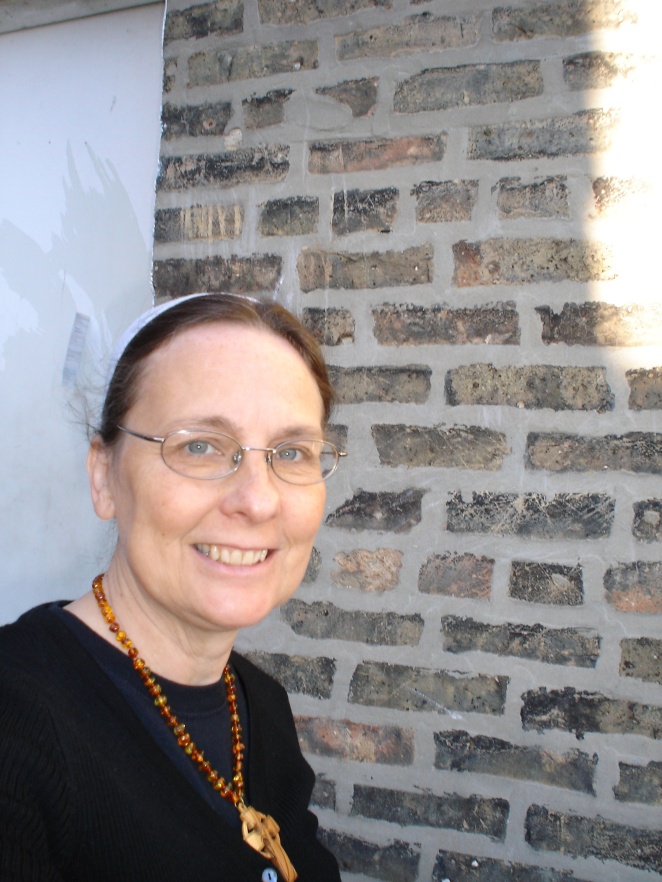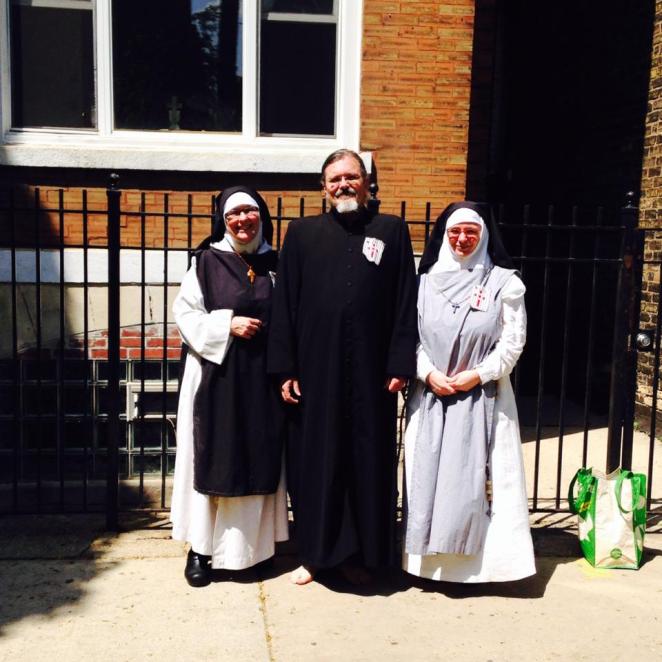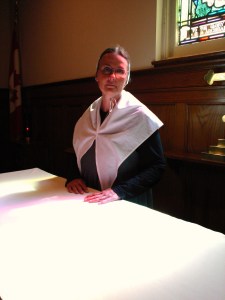
Everyday Me
It’s a quiet day here, as I am under the damping effects of a minor cold. Colds are slightly more serious for me than most otherwise healthy people. I have an allergy to viruses, and even a cold can cause flare-ups of eczema, hives and angio-edema, the most serious form of that group of allergic reactions. So I am on the couch, coughing and sneezing, waiting for the subcutaneous bump on my forehead to disperse (it usually takes about 24 hours) and doing some on-line reading. I use Google Reader and the tag surfer on WordPress, and this opens up a lot of sites it would take me hours to find on my own.
I don’t have to tell my readers how much misinformation is online about Plain groups like the Amish. People who barely know what Anabaptism is about criticize Amish, Mennonites, and anyone who looks Amish as cultish, needlessly romantic, and anachronistic. The Amish and such Anabaptist groups are not a cult, and don’t come close to a definition of a cult. Most of those misperceptions are based on watching movies and television. Although the Amish follow an ordnung, or code of behaviour, so do most Christians. But most of us in the mainline churches don’t take it seriously; that’s the main difference. Then we sit around in committee meetings at church wondering why so few people care about the church anymore. Our blatant hypocrisy may be the key answer to that question. I could have been accused of this myself a few years ago, and justifiably in some ways. But not in the way most people would think: my divorce and remarriage. That was setting to right situations that had gone horribly, destructively bad. Details aren’t necessary here; but it was the worldliness of other behaviour that was really isolating me from fulfilling God’s intentions for me. I was a clotheshorse and a culture dilettante. I was trying to live with a foot on both sides of the Jordan River. I was called into the Kingdom of God, but I wanted to keep a pied-a-terre in the world.
Practicality is my natural turn of mind. There is nothing baroque about me. “Plain” was, perhaps, easier for me than for others. I think all Christians are called to give up the world as much as possible. We are not to be a frivolous people, and we are always called to a life of sobriety. We are to be considerate, thoughtful, and aware of our place in the Kingdom. We are given joy and even happiness, as long as we do not forget who we are.
I submitted to Plain in dress and way of life. We have occasionally ventured back into some worldly pursuit – television was the worst temptation, when we lived in a place where it was always available – but after a spell, we left that behind. Even in reading secular literature I am always asking myself, “What does this mean to me as a Christian?” We can’t completely avoid interacting with the world and culture, but we are called to do that on His terms, not the world’s.
Giving up a worldly wardrobe was a bit of a wrench at first. Through clothing I told the world who I thought I was. I expected that the world would take me at my word, and it pretty much did. I had a classically proportioned figure and I let the world know that. And as one friend once told me, “You are quite beautiful without make-up, but with it you are stunning.” So I would play up the blue eyes, high cheekbones and cupid’s-bow mouth. I wanted to be admired and desired. But that was making an idol out of my appearance, and that kind of shallow self-absorption was contrary to my natural self, who didn’t care much for frivolous indulgence.
I missed my fine clothes because costume was a canvas for my projection of my pretensions, a rendering of my view of self-worth. Once gone, and once in sober black and grey dresses and white kapps, I didn’t mind anymore. Without make-up, I was more concerned with my real health issues, rather than being focussed on appearing healthy while disguising the neglect of true health.
I took to Quaker Plain dress quickly and easily. It is comfortable, inexpensive and easy to maintain. It doesn’t go out of style quickly. The Amish had adopted Quaker style when they emigrated to Pennsylvania, and the two Christian denominations seemed to have supported and influenced each other for about a hundred years.
But modern day Plain dress, whether overtly Amish as in an ordnung or Conservative Quaker as it has evolved and been adapted, is not historic. Even a hundred years ago Plain Quakers and the Amish had a more elaborate form of dress, especially among women. Skirts were much longer, in keeping with the expectation in the dominant culture that a modest women doesn’t even show an ankle; aprons were at least in two parts, cape and skirt; many Amish did not use buttons but continued to use straight pins, as some conservative groups do today. Kapps covered more of the head, had wider ties, and were invariably tied under the chin, especially among the Amish.
Today’s typical Plain dress is simpler in construction, and shorter. Aprons may still consist of two parts, but are much shorter and use less fabric. Only a handful of Old Orders bother with the open front cape and the innumerable straight pins to hold clothing closed. (And the pins aren’t that bad to use once the wearer gets accustomed to it. I have rarely pricked myself pinning on a dress or apron. I went to safety pins and snaps because my husband became wary of all the straight pins. A lost straight pin is much easier to replace than a lost button, too.) The kapp can be a very light, almost transparent confection that sits gloriously on the wearer’s glossy, swept up hair, or it can be the cupped and pleated style that covers the head from the ears back. It is practical because it keeps the loose ends of hair under control, and I don’t often have to redo my bun and kapp unless I have been caught out in a gale.
As for footwear – shoes have become as much a status statement in Western civilization as an expensive automobile or an exotic vacation. Shoes are a bit of poshness that most women can covet and even express. The more ridiculous the shoe in material and height, the greater the status. Stiletto heels say exactly the same thing as footbinding did in imperialist China. Just like displaying long, painted fingernails, the wearer is saying, “I don’t have to work, walk or do anything for myself.” This is where feminism failed us. Instead of being about equal rights under the law for women, it devolved into “Do what you want.” So how can anyone take women seriously if women act frivolously just because, well, they can? We as women object to men being lifelong adolescents, concerned with sex, fun and drinking. Why do we accept the same sort of role for ourselves, and worse, put ourselves in fetishistic, impractical outfits to do the same stupid things?
I am liberated by Plain dress and Plain life. I am not chained to a credit card anymore. I am always suitably dressed for any occasion, assuming I am not covered with flour, goat hair or garden mud. And if I have become disheveled in doing my real work, I can easily change into a fresh apron. I don’t have to choose special undergarments on which to hang my tight, skin-exposing clothes, and I am not in four-inch high hobbles.
Yes, I dress Plain as a statement of Christian witness, but part of that witness is that I am no longer a slave to the hell-driven commodification from Madison Avenue. Not only has Jesus Christ given me spiritual freedom, following His way has freed me from the anxiety and wasted energy of fashion and status.
 When I became Plain, friends asked me how I could give up the “fun” of fashion and shopping. I didn’t think of it as giving up fun, but as finding peace. I was no longer bound to the anxiety of styling my hair, buying clothes, managing an extensive (closets, people, CLOSETS) wardrobe, and “watching” my weight. I had the fun of sewing, choosing fabrics that are suitable and of good quality, and of being confident that in all occasions, I was appropriately dressed. I no longer worry about the ups and downs of weight gain and loss triggered by a chronic illness. My hair is gloriously long and gloriously weaving silver strands amongst the chestnut red and brown. I don’t spend anything on cosmetics and jewelry. I have no valuables to lose, I don’t have to replace clothes because they are no longer suitable to the fashion. I have freedom. The price of being a clotheshorse was not only the hit to the credit card, but the constant level anxiety of trying to look good. That anxiety is gone, and I resent it when people tell me I should have it back, and give up Plain in the way I express it. Am I sometimes “mistaken” for a nun? Yes, but that isn’t really a mistake, as I belong to a religious order. Am I sometimes mistaken for Amish? Yes, but that is no insult, to be “mistaken” for a woman of peace. To be a woman of peace is my goal.
When I became Plain, friends asked me how I could give up the “fun” of fashion and shopping. I didn’t think of it as giving up fun, but as finding peace. I was no longer bound to the anxiety of styling my hair, buying clothes, managing an extensive (closets, people, CLOSETS) wardrobe, and “watching” my weight. I had the fun of sewing, choosing fabrics that are suitable and of good quality, and of being confident that in all occasions, I was appropriately dressed. I no longer worry about the ups and downs of weight gain and loss triggered by a chronic illness. My hair is gloriously long and gloriously weaving silver strands amongst the chestnut red and brown. I don’t spend anything on cosmetics and jewelry. I have no valuables to lose, I don’t have to replace clothes because they are no longer suitable to the fashion. I have freedom. The price of being a clotheshorse was not only the hit to the credit card, but the constant level anxiety of trying to look good. That anxiety is gone, and I resent it when people tell me I should have it back, and give up Plain in the way I express it. Am I sometimes “mistaken” for a nun? Yes, but that isn’t really a mistake, as I belong to a religious order. Am I sometimes mistaken for Amish? Yes, but that is no insult, to be “mistaken” for a woman of peace. To be a woman of peace is my goal.


















![75603_463629669372_619509372_5397382_2252200_n[1]](https://magdalenaperks.files.wordpress.com/2011/05/75603_463629669372_619509372_5397382_2252200_n1.jpg?w=225&h=300)









![155096_463629374372_619509372_5397375_318587_n[1]](https://magdalenaperks.files.wordpress.com/2011/05/155096_463629374372_619509372_5397375_318587_n1.jpg?w=200&h=300)
